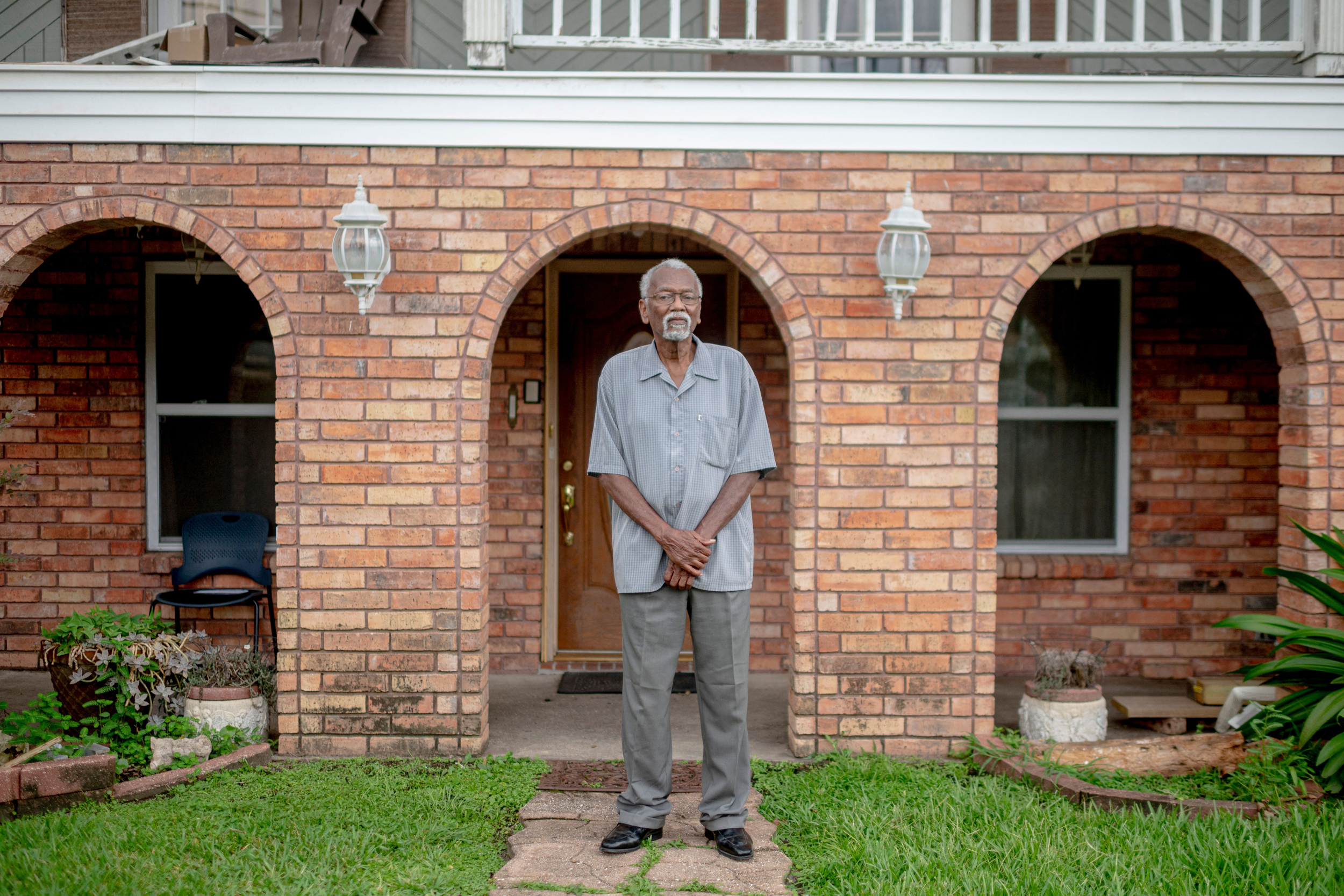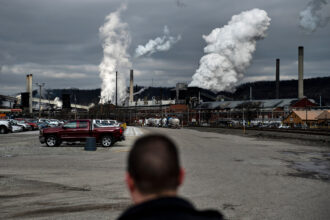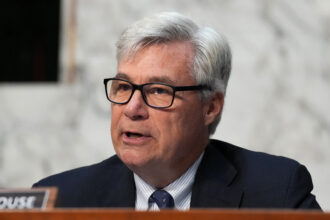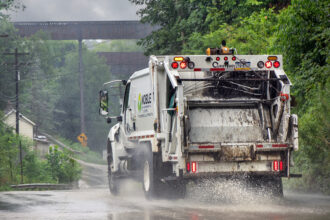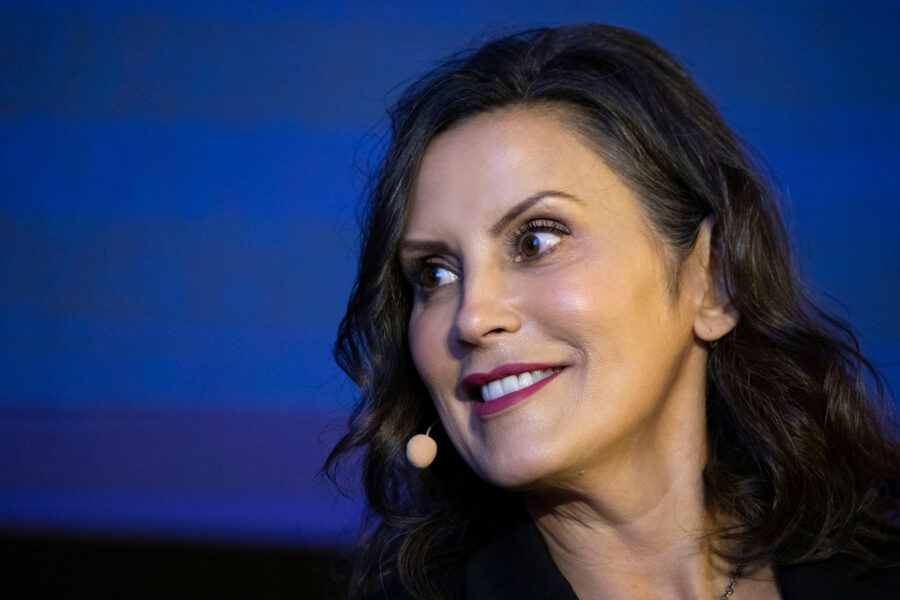Frontline community groups teamed up with national environmental organizations Wednesday to sue the Trump administration for letting chemical manufacturing plants off the hook for toxic, carcinogenic air pollution.
The lawsuit targets an executive action from July that gave 50 plants a two-year exemption from a Biden-era U.S. Environmental Protection Agency rule that tightened restrictions on cancer-causing air toxics like ethylene oxide and chloroprene. After years of fierce grassroots advocacy from communities harmed by chemical plants, the EPA enacted the 2024 HON rule—Hazardous Organic NESHAP (National Emission Standards for Hazardous Air Pollutants)—and projected that it would reduce air pollution-related risks for communities living near these facilities by about 96 percent while cutting the industry’s emissions by more than 6,200 tons annually.
The plaintiffs—which include Texas Environmental Justice Advocacy Services, the Environmental Defense Fund, the Natural Resources Defense Council, Concerned Citizens of St. John and RISE St. James—say President Donald Trump’s exemption is unlawful and will increase health risks for communities in Texas, Louisiana, Kentucky, Illinois and other states.
“For him to bring it back two more years, that means two more years of toxic pollution, two more years of us getting sick,” said Sharon Lavigne, founder and CEO of the grassroots Louisiana group RISE St. James and a leading environmental justice activist.
The goal of the lawsuit is both to protect the pollution restrictions in the HON rule and to show the Trump administration that it can’t make unilateral decisions to overturn progress won through the democratic process, said NRDC senior attorney Sarah Buckley.
“This exemption is standing in the way of really crucial health protections for 50 communities across the country,” Buckley said. “We can’t just let this abuse of power, to sweep these protections away with the stroke of a pen, go unchecked.”
The EPA declined to comment on ongoing litigation.
The proclamation gave exemptions to 50 out of 217 total facilities, most of them in the Gulf South: 17 out of the 80 such facilities in Texas and 18 of the 49 in Louisiana, according to the Environmental Defense Fund.
“The President used his lawful authority to grant these exemptions, which simply give facilities more time to abide by environmental standards,” said White House spokesperson Taylor Rogers in an emailed statement. “Contrary to the lies peddled by far-left, Climate activists, the facts remain: US air quality is among the best of industrialized countries and our framework for environmental protection remains the gold standard across the world.”
Nearly half of Americans are stuck with unhealthy levels of air pollution, and the trend is getting worse, according to the American Lung Association, especially in communities of color. The Trump administration is rapidly reversing environmental protections, particularly those focused on addressing the disproportionate burden faced by people of color and low-income communities.
Residents of Cancer Alley—an 85-mile stretch of Louisiana where the fossil fuel and petrochemical industry is heavily concentrated in Black and low-income neighborhoods—have been dealing with hazardous pollutants and high cancer rates for years.
Ethylene oxide, one of those pollutants, has been linked to brain and lung tumors, lymphoma, leukemia, breast cancer, neurological disorders, miscarriages and reproductive and developmental harm. Chloroprene can increase risk of liver cancer, depress the central nervous system and damage kidneys and lungs.

Last year, researchers at Johns Hopkins University found levels of ethylene oxide more than 1,000 times higher than what’s considered safe across Cancer Alley.
Robert Taylor lives in Reserve, Louisiana, near two chemical facilities on the exemption list, in a predominantly Black community with high levels of both ethylene oxide and chloroprene pollution and with a cancer risk in the 99th percentile for the country, according to the Environmental Defense Fund.
Taylor—co-founder of Concerned Citizens of St. John—fought for the HON rule to protect frontline communities like his across the country. He hopes the lawsuit will reverse the Trump administration’s exemptions.
“It is outrageous that here now in the 21st century we live this horribly,” Taylor said. “We call this a free country, but these people can come here in our community, sit these horrible plants right in the middle of our communities, and poison and kill us.”
This story is funded by readers like you.
Our nonprofit newsroom provides award-winning climate coverage free of charge and advertising. We rely on donations from readers like you to keep going. Please donate now to support our work.
Donate NowTrump’s proclamation hinged on a provision in the Clean Air Act that plaintiffs say was never used before this administration that allows the president to exempt a source from a pollution standard in the interest of national security or if the technology needed to implement the standard isn’t available.
The proclamation did not include any facility-specific analysis explaining how either of those prerequisites applied and the lawsuit argues that the requirements have not been met, given that air pollution control technology is widely available in the chemical manufacturing industry, and that in many cases, the 2024 rule would simply require facilities to increase use of technologies they were already using. The lawsuit argues that the proclamation “exceeds the President’s lawful authority.”
Typically, the government would have 60 days to respond to the complaint. But the government shutdown might lengthen the process, Buckley said.

For Lavigne, who has lost family and friends to cancer, this fight is personal.
“We have so many people being diagnosed with cancer, so many people that are dying of cancer, we have funerals just about every week because of the pollution,” Lavigne said.
She said she hopes the lawsuit will give her community respite.
“It’s heartbreaking to see my community die,” Lavigne said. “And it don’t have to be, if these politicians will stop bowing down to industry, … if people that we vote in office would think about our best interest and not their pockets.”
Correction: This story was updated Oct. 23, 2025, to correct the number of total facilities in Texas and Louisiana covered by the HON rule. The Environmental Defense Fund corrected its original figures to 80 in Texas, rather than 78, and 49 in Louisiana, rather than 40.
About This Story
Perhaps you noticed: This story, like all the news we publish, is free to read. That’s because Inside Climate News is a 501c3 nonprofit organization. We do not charge a subscription fee, lock our news behind a paywall, or clutter our website with ads. We make our news on climate and the environment freely available to you and anyone who wants it.
That’s not all. We also share our news for free with scores of other media organizations around the country. Many of them can’t afford to do environmental journalism of their own. We’ve built bureaus from coast to coast to report local stories, collaborate with local newsrooms and co-publish articles so that this vital work is shared as widely as possible.
Two of us launched ICN in 2007. Six years later we earned a Pulitzer Prize for National Reporting, and now we run the oldest and largest dedicated climate newsroom in the nation. We tell the story in all its complexity. We hold polluters accountable. We expose environmental injustice. We debunk misinformation. We scrutinize solutions and inspire action.
Donations from readers like you fund every aspect of what we do. If you don’t already, will you support our ongoing work, our reporting on the biggest crisis facing our planet, and help us reach even more readers in more places?
Please take a moment to make a tax-deductible donation. Every one of them makes a difference.
Thank you,


